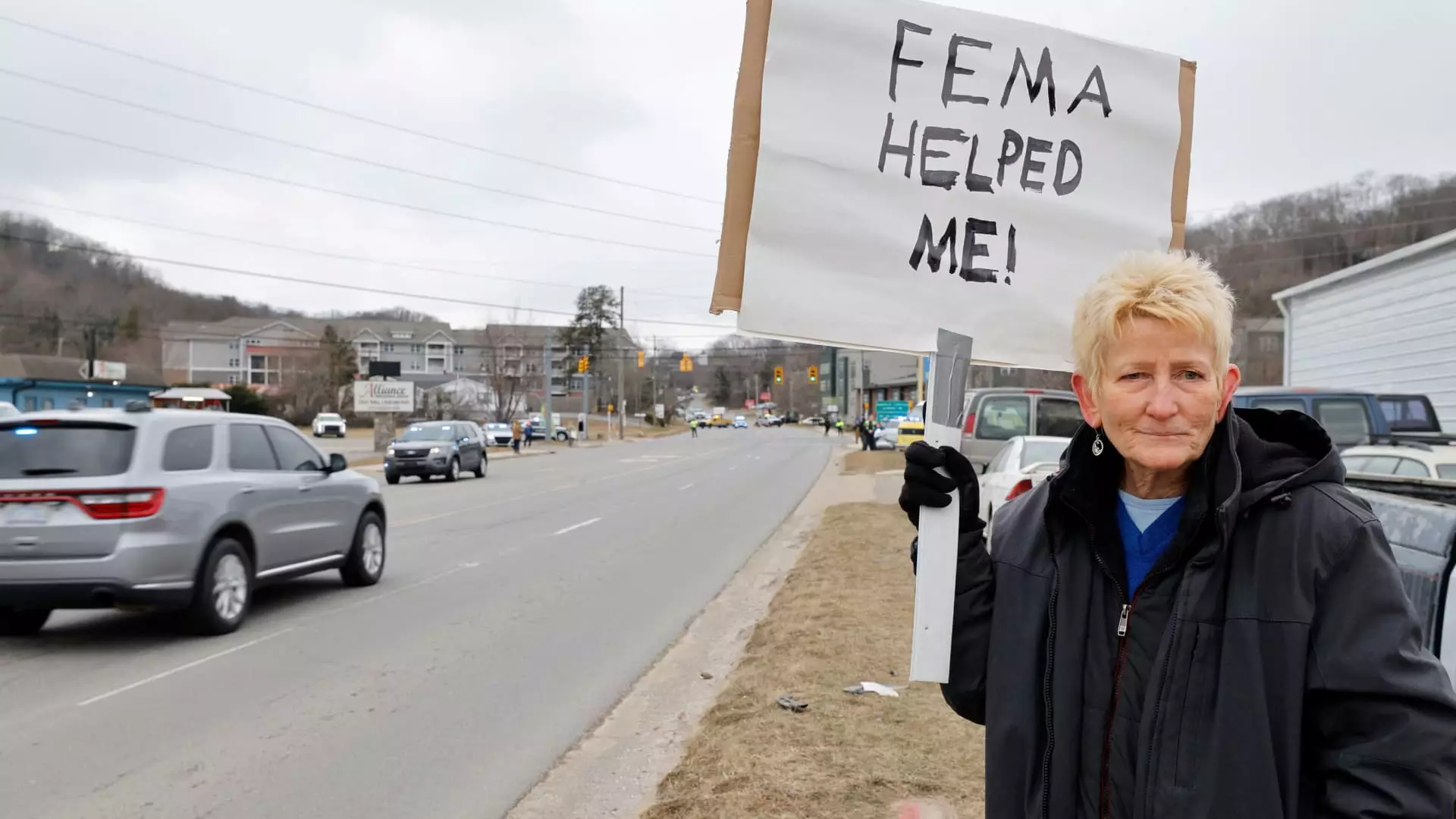As the Trump administration initiates what can only be described as a reckless dismantling of the Federal Emergency Management Agency (FEMA), homeowners across America must confront an unsettling truth: the safety net designed to catch us when disaster strikes is rapidly fraying. The administration’s plans to phase out key functions of this vital organization, alongside significant budget cuts, are not mere administrative maneuvers—they represent a perilous gamble that could leave millions vulnerable in the face of natural disasters.
Concerning Cuts and Dangerous Declarations
President Trump’s announcement regarding the phased withdrawal of FEMA, alongside his declaration to hand over fewer disaster relief funds from the federal level, raises a host of alarming questions. Experts warn that the agency, which is supposed to serve as the first line of defense for citizens affected by natural catastrophes, will be severely limited in its capacity to respond effectively. With a proposed budget cut of $646 million and the termination of crucial disaster prevention programs, the likelihood of state and local governments being able to fill the void appears slim at best.
Charles Nyce, an expert in risk management, succinctly articulates that “FEMA is not going to operate in the same way that it has in the past.” This statement epitomizes the disillusionment felt among those who rely on FEMA’s essential resources when calamity strikes. The proposed alterations earmark a shift toward localities bearing greater responsibility for their disaster recovery efforts, a proposition that many fear could overextend already strained state budgets, leaving countless families without necessary support.
Relying on State and Local Aid: A Recipe for Disaster
If local governments are expected to shoulder the burden of disaster relief, we must ask: how prepared are they for this undertaking? The reality is stark. Many states lack the financial resources or infrastructure necessary to substantially aid homeowners who find themselves confronting catastrophic loss. By forcing states into a position where they must allocate their limited funds to disaster recovery, the administration is essentially gambling with the lives and finances of residents who may not have adequate preparation or insurance coverage.
Furthermore, the federal aid that does exist is primarily intended as a supplementary source for losses not covered by homeowners insurance policies—not as a comprehensive solution for disaster recovery. Nyce explains that FEMA’s small grants have historically provided limited support, averaging only around $3,500 for individuals over nearly a decade. This meager sum pales in comparison to the staggering costs associated with rebuilding after a natural disaster, leaving homeowners at a severe disadvantage.
Focusing on Preparedness: A Burden Shifts to Citizens
With the impending changes to FEMA’s structure, an increasingly important reality emerges: homeowners must become radically proactive in their disaster preparations. Citizens are not only responsible for knowing their insurance coverage details—many will now have to attempt to prepare for potential financial catastrophes on their own. This unprecedented shift in responsibility could easily overwhelm families who are already facing economic pressures.
The insights offered by recovery professionals indicate a pressing need for individuals to carefully examine their insurance policies. The risk of being underinsured is a constant threat, and homeowners are urged to assess their unique needs diligently. Moreover, the necessity for additional coverage, such as flood insurance, cannot be overstated in the wake of increasingly unpredictable weather patterns.
Furthermore, experts recommend practical preparedness measures, such as assembling emergency kits that include food, water, and vital documents. Unfortunately, these measures, while sound, should not have to replace the safety net once provided by an effective FEMA. Americans are being forced to think about survival strategies during disasters, but these efforts will only ever be an inadequate substitute for reliable federal support.
The Fragility of Disaster Recovery in an Ever-Changing Climate
As experts continue to lament the future of FEMA, the landscape of disaster response becomes increasingly alarming. The drive towards decentralizing disaster relief rolls back years of progress in organized federal response to natural disasters, thus elevating the risk of chaos in urgent situations. The question remains: What happens when citizens are left to navigate this minefield alone, without the necessary guidance and support they have relied upon for decades?
In this political climate, it is crucial for citizens to hold their representatives accountable. Continuous funding and a focus on robust disaster preparedness are critical to restoring order in the face of climate-related upheavals and other emergencies. If the status quo continues, the American public will find itself facing the harsh consequences of policies that prioritize ideology over the safety of its citizens, leaving individual families to confront devastating realities with little to no support. This situation demands urgent attention and collective action; our homes and lives depend on it.

